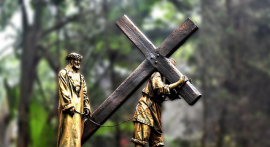
Pope Francis
This morning at around 10:30am (Korea time), Pope Francis, the leader of the Roman Catholic Church landed in Seoul Airport in Sungnam, South Korea. The Pope was greeted by President Geun-Hye Park, some representatives from the Blue House and the Korean Catholic Church along with 32 other Korean citizens who were specially invited to greet the religious leader.
Pope Francis expressed great excitement in visiting Korea, referring to the nation as “the land of many martyrs’. He also shared about his experience with the Korean people while he was serving as bishop in Argentina. President Park was the first to greet the Pope and told him, “I hope your visit will be a great encouragement and a sign of hope for the Korean people. I hope while your stay is short that it will be both comfortable and enjoyable.”
Among the 32 citizens that were invited to greet the Pope along with the President and other political and religious leaders were families of the victims of the Sewol tragedy, North Korean defectors and even immigrant laborers. From over an hour before his arrival, around 40 people were waiting at the entrance to Seoul Airport to greet him. Police and Firemen were stationed there in case of emergency.
The Pope’s arrival was broadcast all over the nation. Members of the honor guard fired 21 rounds in the air to signal his arrival in their country. Two children dressed in Hanbok (traditional Korean dress) were invited to present flowers to the Pope. Pope Francis responded by embracing them and told them, “I thank you and I love you for your kindness”.
After spending some time shaking hands and greeting every individual that came out to greet him, the Pope boarded a vehicle that took him to Papal Embassy of Korea.
During his stay, the Pope will be visiting the families of victims of the Sewol tragedy when 300 high school students were lost. The Pope will also be meeting with senior Korean women who were forced to serve as “Comfort Women” sex slaves for the Japanese army during World War 2.












